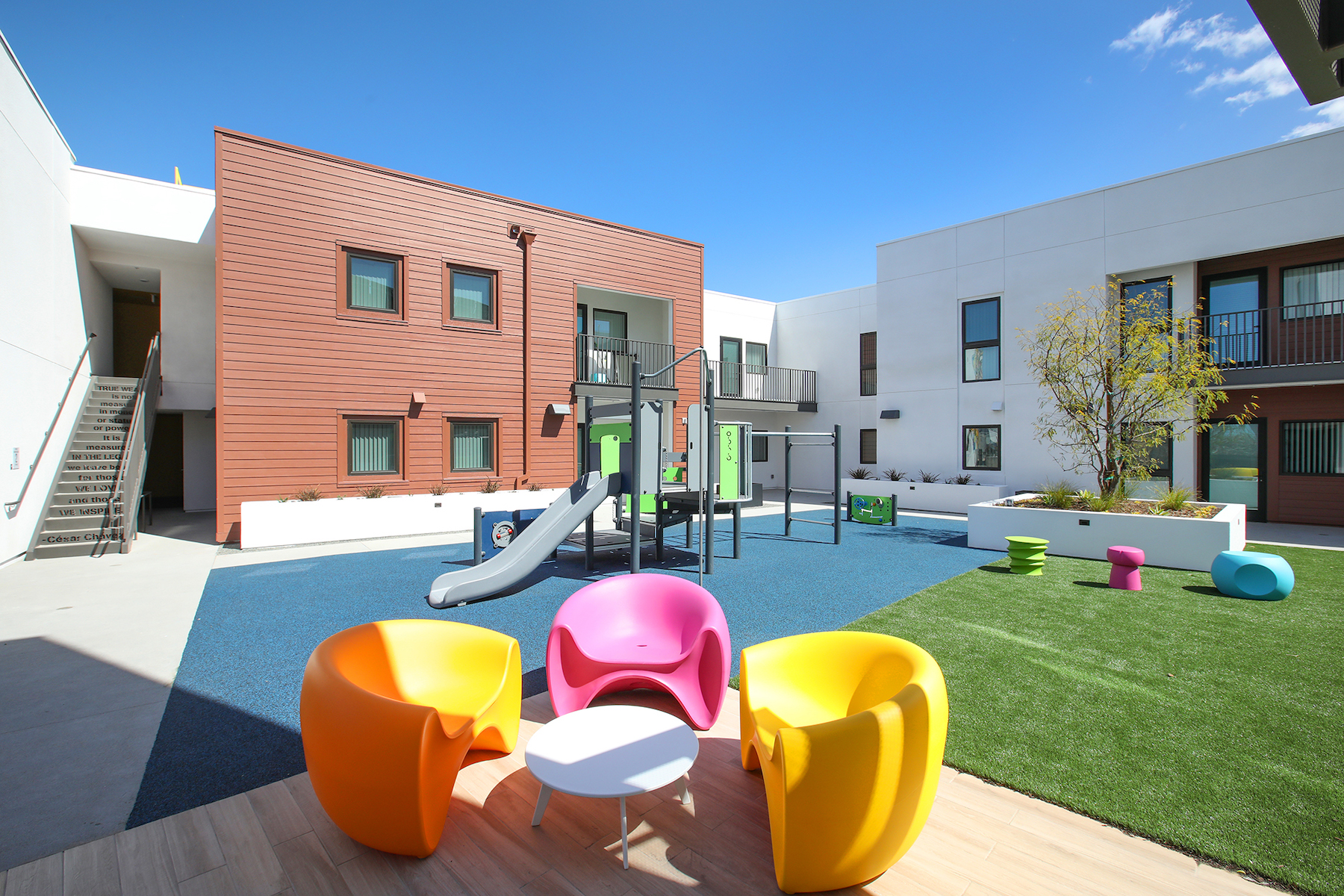According to one estimate, America’s cities and suburbs are host to some 70,000 strip malls, many of which are riddled with vacant stores and shuttered gas stations. Could not these outmoded neighborhood malls be put to better use, possibly for much-needed affordable housing? That question became more than a hypothetical for the project team for La Placita Cinco, in the Southern California city of Santa Ana.
If you’ve ever flown into John Wayne Airport, you’ve at least touched down in Santa Ana. Its 310,227 residents account for a tenth of Orange County’s population. Three-quarters of its residents (76%) identify as Hispanic or Latino; 43% are foreign-born. Median household income was $72,406 in 2020, versus $94,441 for the county. A chronic shortage of affordable housing has led to widespread overcrowding in the city. “Our families are doubled- and tripled-up,” said Judson Brown, Santa Ana’s Housing Manager.
Sometime in the 1970s, Tiny Tim Plaza (no one can recall how it got its curious name), a 2.33-acre shopping center featuring a gas station and two intersecting rows of retail businesses, opened in Santa Ana’s Artesia Pilar neighborhood. For decades, local residents loyally patronized its dozen or so shops, which included a bakery, a grocery store, a butcher shop, a restaurant, a coffee shop, a locksmith, a beauty salon, a clothing store, a homeopathic therapy store, an electronics shop, an insurance office, and a laundromat.
In 2016, Brian Hendricks, Principal with local real estate firm Magis Realty, bought the property with the intent of razing the site and building studio and one-bedroom apartments. That scheme was stymied when the laundromat owner, whose lease ran till 2038, held out for a Midas-sized pile of cash. Hendricks then linked up with Community Development Partners, a well-respected Southern California nonprofit developer founded in 2011 by brothers Kyle and Eric Paine, to help break the deadlock and redevelop the property for housing.
STARTING OVER FROM SCRATCH
The holdout forced CDP to rethink the whole scheme. Should they keep the shops, which were chugging along, despite their age? And could they recalibrate the unit mix to provide larger, more family-oriented apartments to help overcome Santa Ana’s monumental housing shortage, and help the city meet its numbers under the state’s Regional Housing Needs Allocation system? Studio and one-bedroom units, said Brown, “were not what the city needed.”
“From the city’s perspective, our goal was clear: to help the developer realize a project that would balance affordable housing and reinvestment in the commercial shopping district in a manner that would serve the community’s diverse needs,” said Ali Pezeshkpour, AICP, Principal Planner for the city. It helped that the site was within walking distance of not one but two stations of a planned extension of the Orange County light-rail line. “That was the cherry on top,” said Brown.
CDP subsequently bought out Magis’s share of the property and brought in Integrity Housing as finance consultant; Mercy House as service provider; City Fabrick, a nonprofit urban design studio, as designer; and TCA Architects as executive architect.
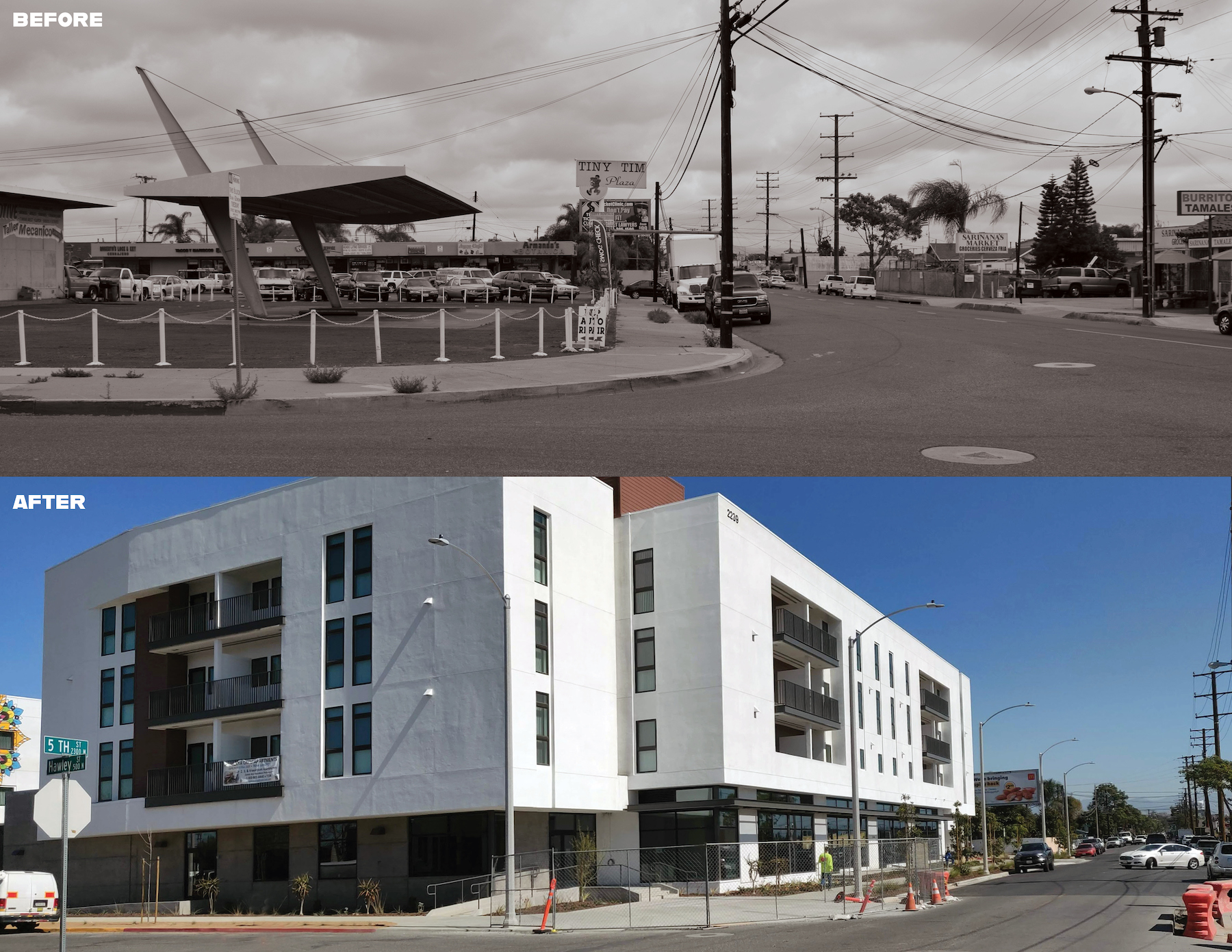
Coincidentally, City Fabrick had just participated in a competition to study how garden-variety strip centers like Tiny Tim could be converted into more intense, pedestrian-oriented community assets. “We didn’t win, but we amassed a lot of knowledge about what worked and what didn’t,” said Brian Ulaszewski, LEED AP, City Fabrick’s Executive Director.
That knowledge would soon be put to the test in more than a year of meetings with stakeholders.
SECURING THE ENTITLEMENTS
Before any housing could be built, the property had to be rezoned from commercial to mixed-use. But when word got out that such a rezoning would allow “affordable” housing, homeowners in the adjacent single-family neighborhood started asking questions: Did “affordable” really mean “cheap”? Would their quality of life be affected? Would their property values be negatively affected?
From a design standpoint, the key sticking point had to do with the height of the structure. “We started with a shorter building, but the city wanted us to break the scale of the development down as you go into the neighborhood, which resulted in more variety in building height,” said Ulaszewski.
After a year of discussion with the city and surrounding neighborhood, the rezoning was granted. This discussion resulted in a podium-style structure—Tim Mustard, AIA, Principal, TCA Architects, calls it a “floating box”—that surrounds a central courtyard. The four-story urban edge, on 5th Street, steps down to three stories toward the single-family homes and the retail buildings.
La Placita Cinco opened in 2021 with 20 two-bedroom, 29 three-bedroom, and two four-bedroom apartments. CDP added the two large units even though they were not required. “CDP always tries to go above the minimum, which helps them navigate through the approval process,” said Mustard. Fifteen units were devoted to families earning 30% of Orange County’s AMI, five for families at 50% of AMI, and 30 for families at 60% of AMI. (One unit was set aside for the property manager.) Monthly rents range from $1,632 to $2,154.
Unlike most new or redeveloped apartment projects, where the developer sets aside ground-floor space in the hope of attracting retail tenants, Tiny Tim Plaza was fully occupied. “It was like a little town square,” said Ulaszewski. “You couldn’t curate all those commercial uses from scratch. It just needed some help to pull it all together.”
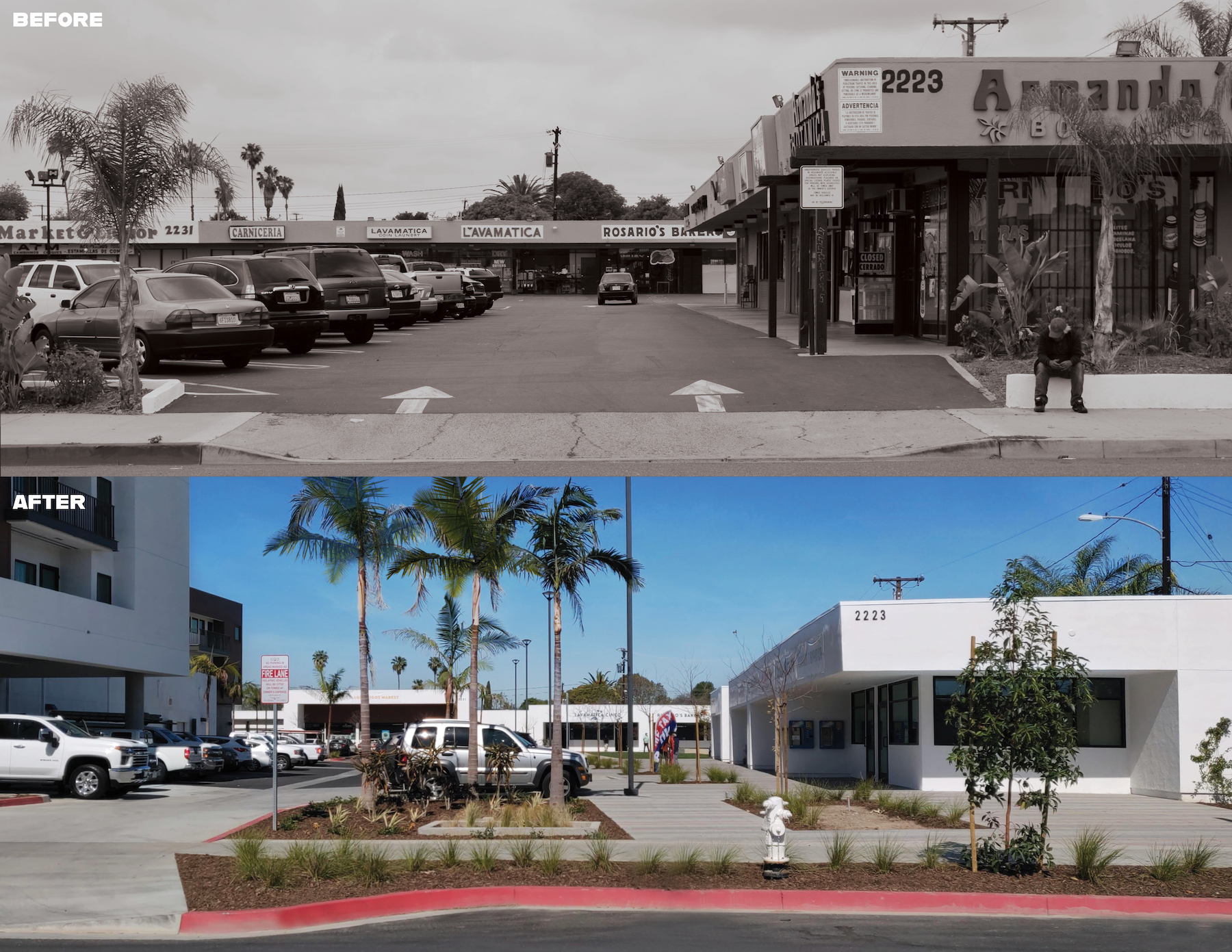
“The neighbors told us there had been no investment in the shopping plaza in more than 40 years,” said CDP’s President, Kyle Paine. “They cared about it, but they wanted to see investment that would benefit them.”
REINVIGORATING THE SHOPPING EXPERIENCE
The storefronts showed their age—“heavy stucco awnings with no identity, really monotonous,” said Ulaszewski. A grant from the Wells Fargo Foundation enabled the project team to work with the shop owners to modernize the façades of their stores. “The survival of the businesses was incredibly important, especially during the Covid pandemic, and Wells Fargo really made a significant positive impact there,” said Pezeshkpour.
Other improvements included new outdoor lighting, widened sidewalks to enhance pedestrian access, upgrades to the stores’ mechanical systems, and a new cool roof. The asphalt in the parking lot was replaced with permeable paving, and a 36,700-sf natural turf mini-park was added to further upgrade the property.
To support the businesses, CDP pledged to keep their rents flat for three years, then cut their rents in half during construction. When the pandemic hit, CDP stopped charging them rent altogether.
Today, with a lone exception all of the businesses are still in operation and “doing even better than before,” said Ulaszewski.
Artesia Pilar residents also raised concerns about parking at La Placita Cinco. Would there be enough dedicated spaces for all tenants, or would their cars spill over onto their already crowded streets?
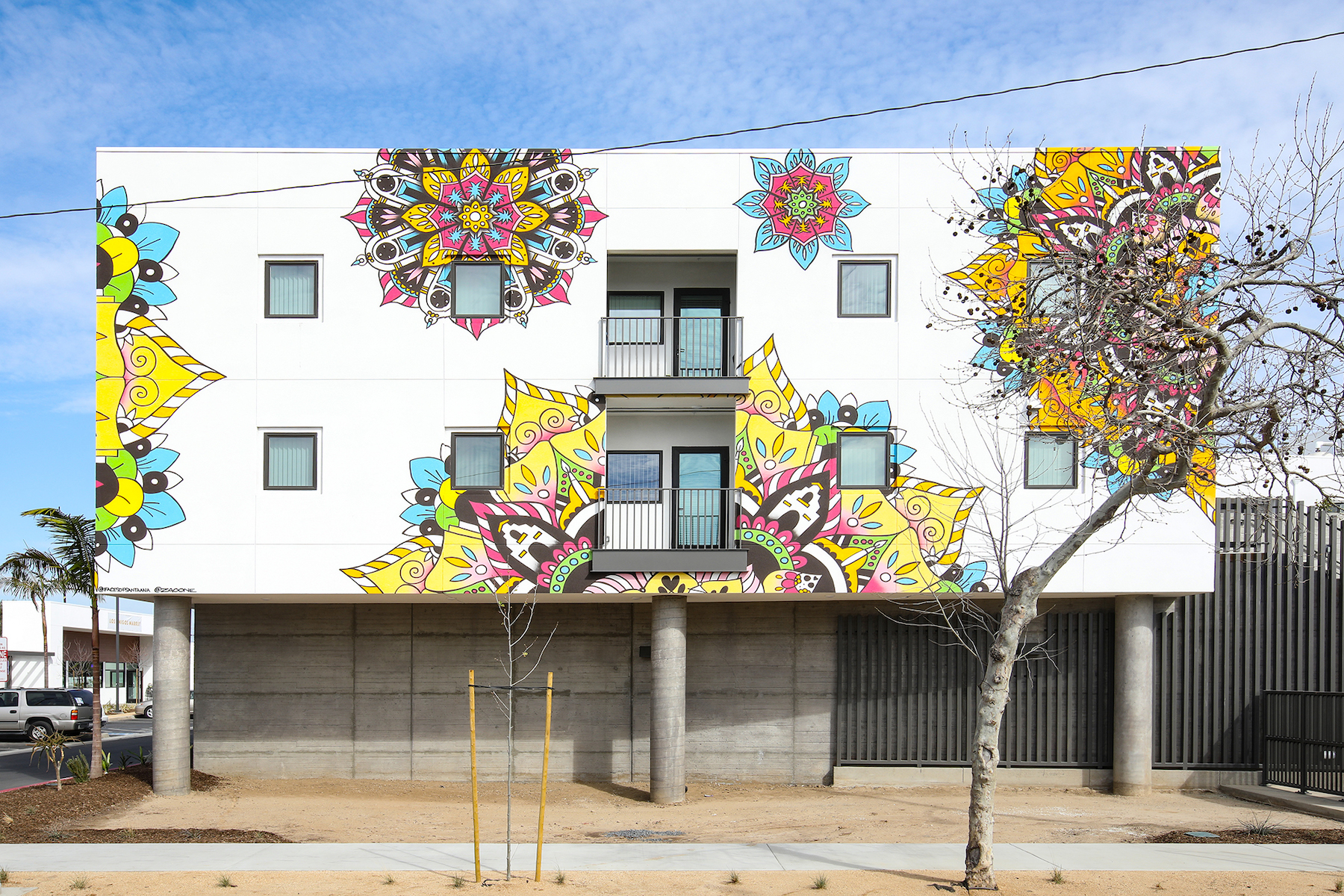
The project team toyed with the idea of building a parking structure, but quickly dismissed it as too expensive. They tried a split-level podium and other configurations, none of which worked.
In the end, they designed a podium structure that was high enough to accept car lifts to stack tenants’ cars one on top of the other. This created 91 residential parking stalls, or 1.75 spaces/unit, well above the 1.25 spaces/unit required by state law. This solution also meant that less contaminated soil under the old gas station was disturbed. “That saved a lot on remediation costs,” said TCA’S Mustard. Another 57 surface spaces serve the retail stores.
COMING UP WITH THE DOLLARS
Community Development Partners had to dip into multiple pots to raise the $31.4 million for La Placita Cinco. Because the site was on a planned streetcar line, the city helped CDP apply to California’s Affordable Housing and Sustainable Communities program, which funds transit-oriented developments. (See “We need more ‘TOD’ housing,” https://bit.ly/3trylN2). “It was a very competitive round, and they just missed getting the grant,” said Brown.
ALSO SEE: 7 tips for designing fitness studios in multifamily housing developments
Luckily, CDP was on the waiting list for a 9% federal LIHTC award when, “by the skin of their teeth, they qualified,” said Brown. The city added a $6 million grant from its inclusionary housing fund. “The $6 million really kickstarted the deal,” said CDP’s Kyle Paine. Citibank provided construction financing, Freddie Mac covered the long-term debt, and R4 Capital administered the equity tax credits.
TAKE A SECOND LOOK TO SEE ALL THE POSSIBILITIES
“In the 1970s, when strip malls were being born, we had an automobile-centric mentality,” said TCA’s Mustard. “Now it’s a pedestrian-centric environment. We need developers to get out of any preconceived notions about what to do with a site, and, with a little more thought, come up with a really good community project.”
Santa Ana’s Pezeshkpour echoed that sentiment. “As we look at our cities, the easiest parcels to redevelop are the vacant lots, but we should be looking at what’s possible on these underdeveloped commercial sites and use that space more efficiently and wisely to better meet the needs of our communities.”
La Placita Cinco is proof of that concept. Last October, the project won the Jack Kemp Award for Excellence in Affordable and Workforce Housing from the Urban Land Institute.
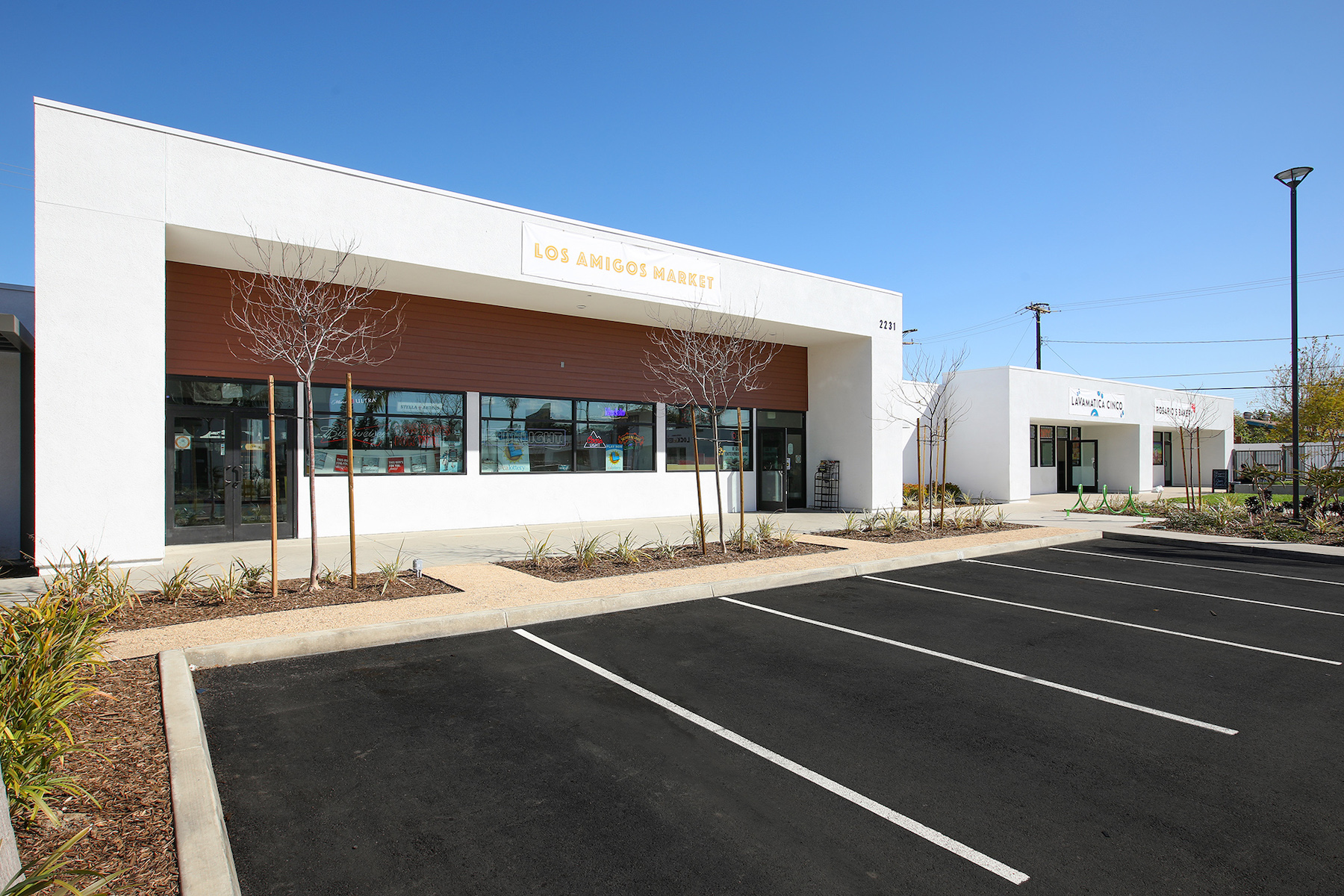
MEETING RESIDENTS’ NEEDS AT LA PLACITA CINCO
“We provide services that many of our residents never had before,” said Stephanie Medina, Residential Services Coordinator with Mercy House, the nonprofit social services agency at La Placita Cinco.
“During the pandemic, as residents started moving in, some families were struggling with rent due their wages being cut, or their hours reduced. Or they had to leave their jobs to take care of their children,” said Medina. “We helped them get rental assistance.”
Medina, who grew up in Santa Ana and is bilingual, translates documents for residents, such as job applications, rental and utility assistance forms, and information about local programs and resources.
On the first floor of the community center, residents have access to computers, printers, Internet access, foosball and Ping Pong tables, as well as a fully stocked art studio. The second floor has a tenants-only space for parties and events, plus a children’s playground. “The parents feel their kids are safe here,” said Medina.
Building Team Information for La Placita Cinco, Santa Ana, Calif.
Owner/developer: Community Development Partners
Financial consultant: Integrity Housing
Design studio: City Fabrick
Executive architect: TCA Architects
Structural engineer: Harris & Sloan
Civil engineer: Ware Malcomb
Mechanical engineer: LDI Mechanical
Electrical engineer: Salas O’brien
Plumbing engineer: AMPAM Parks Mechanical
Social services: Mercy House
Property manager: FPI Management
General contractor: Walton Construction
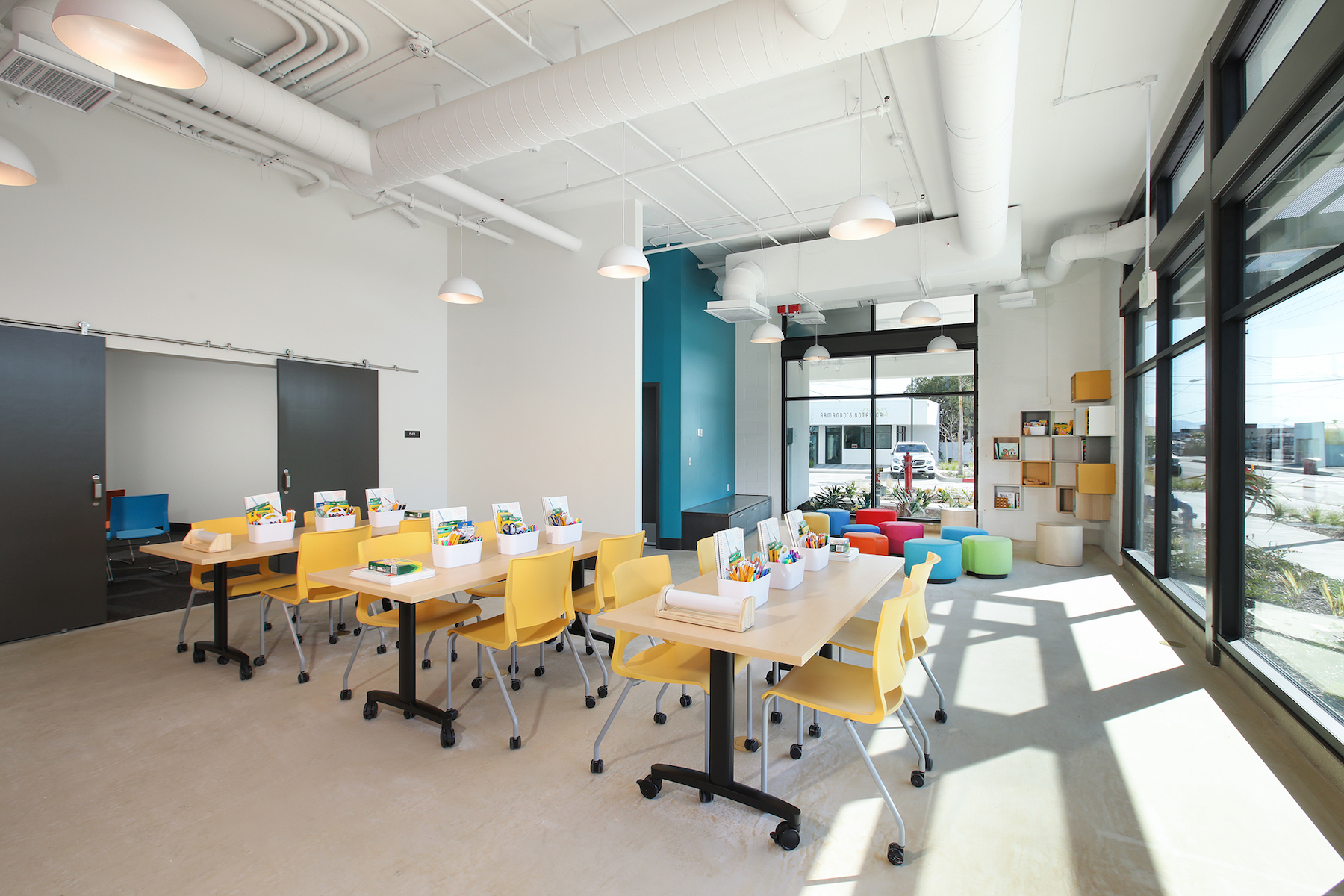

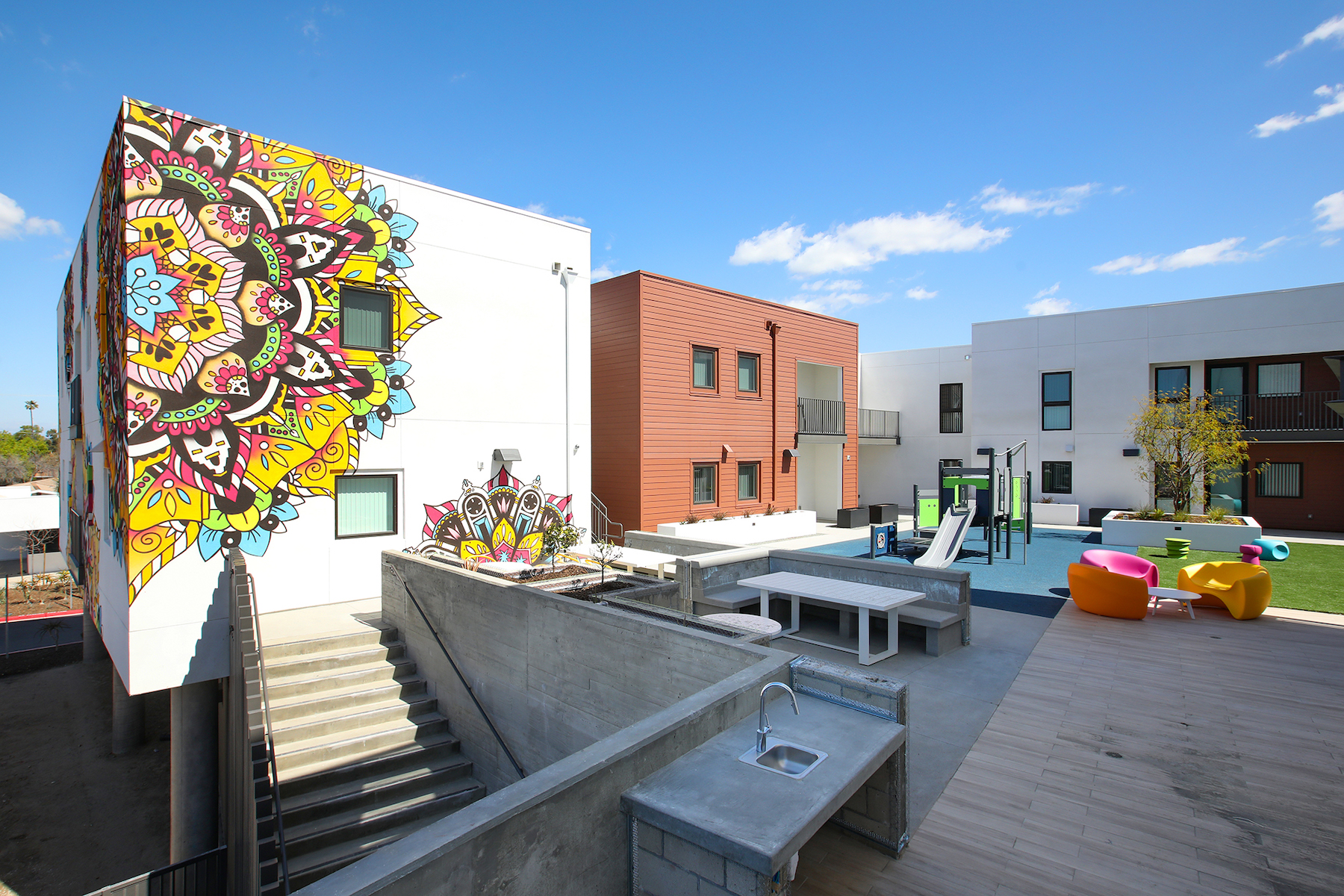
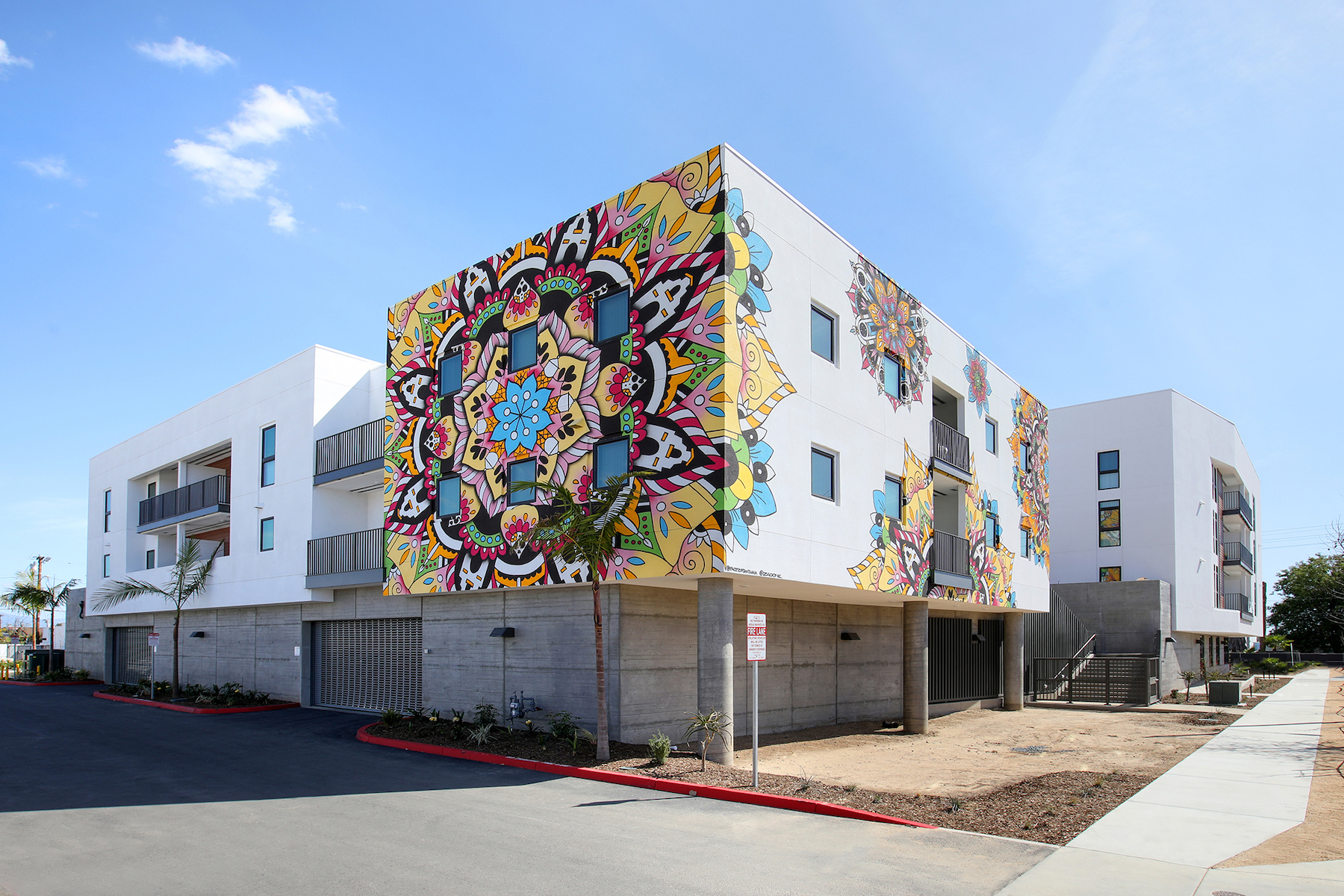
Related Stories
MFPRO+ New Projects | Oct 30, 2024
BIG’s One High Line finally reaches completion in New York City’s West Chelsea neighborhood
One High Line, a luxury residential project spanning a full city block in New York’s West Chelsea neighborhood, reached completion this summer following years of delays related to investor lawsuits.
MFPRO+ New Projects | Oct 30, 2024
Luxury waterfront tower in Brooklyn features East River and Manhattan skyline views
Leasing recently began for The Dupont, a 41-story luxury rental property along the Brooklyn, N.Y., waterfront. Located within the 22-acre Greenpoint Landing, where it overlooks the newly constructed Newtown Barge Park, the high-rise features East River and Manhattan skyline views along with 20,000 sf of indoor and outdoor communal space.
Multifamily Housing | Oct 28, 2024
A case for mid-rise: How multifamily housing can reshape our cities
Often referred to as “five-over-ones,” the mid-rise apartment type is typically comprised of five stories of apartments on top of a concrete “podium” of ground-floor retail. The main criticism of the “five-over-one” is that they are often too predictable.
Adaptive Reuse | Oct 22, 2024
Adaptive reuse project transforms 1840s-era mill building into rental housing
A recently opened multifamily property in Lawrence, Mass., is an adaptive reuse of an 1840s-era mill building. Stone Mill Lofts is one of the first all-electric mixed-income multifamily properties in Massachusetts. The all-electric building meets ambitious modern energy codes and stringent National Park Service historic preservation guidelines.
MFPRO+ News | Oct 22, 2024
Project financing tempers robust demand for multifamily housing
AEC Giants with multifamily practices report that the sector has been struggling over the past year, despite the high demand for housing, especially affordable products.
Products and Materials | Oct 17, 2024
5 multifamily tech products for your next project
Multifamily housing and technological upgrades go hand-in-hand. From the rise in electric vehicle charging needs to the sophistication of smart home accessories, tech products are abound in the multifamily space.
Codes and Standards | Oct 16, 2024
North Carolina’s code policies likely worsened damage caused by Hurricane Helene
The North Carolina Legislature’s rejection of building code updates likely worsened the damage caused by Hurricane Helene, code experts say. Over the past 15 years, lawmakers rejected limits on construction on steep slopes, which might have reduced the number of homes destroyed by landslides.
MFPRO+ News | Oct 16, 2024
One-third of young adults say hurricanes like Helene and Milton will impact where they choose to live
Nearly one-third of U.S. residents between 18 and 34 years old say they are reconsidering where they want to move after seeing the damage wrought by Hurricane Helene, according to a Redfin report. About 15% of those over age 35 echoed their younger cohort’s sentiment.
Student Housing | Oct 9, 2024
University of Maryland begins work on $148 million graduate student housing development
The University of Maryland, in partnership with Campus Apartments and Mosaic Development Partners, has broken ground on a $148.75 million graduate student housing project on the university’s flagship College Park campus. The project will add 741 beds in 465 fully furnished apartments.
MFPRO+ News | Oct 9, 2024
San Francisco unveils guidelines to streamline office-to-residential conversions
The San Francisco Department of Building Inspection announced a series of new building code guidelines clarifying adaptive reuse code provisions and exceptions for converting office-to-residential buildings. Developed in response to the Commercial to Residential Adaptive Reuse program established in July 2023, the guidelines aim to increase the viability of converting underutilized office buildings into housing by reducing regulatory barriers in specific zoning districts downtown.


